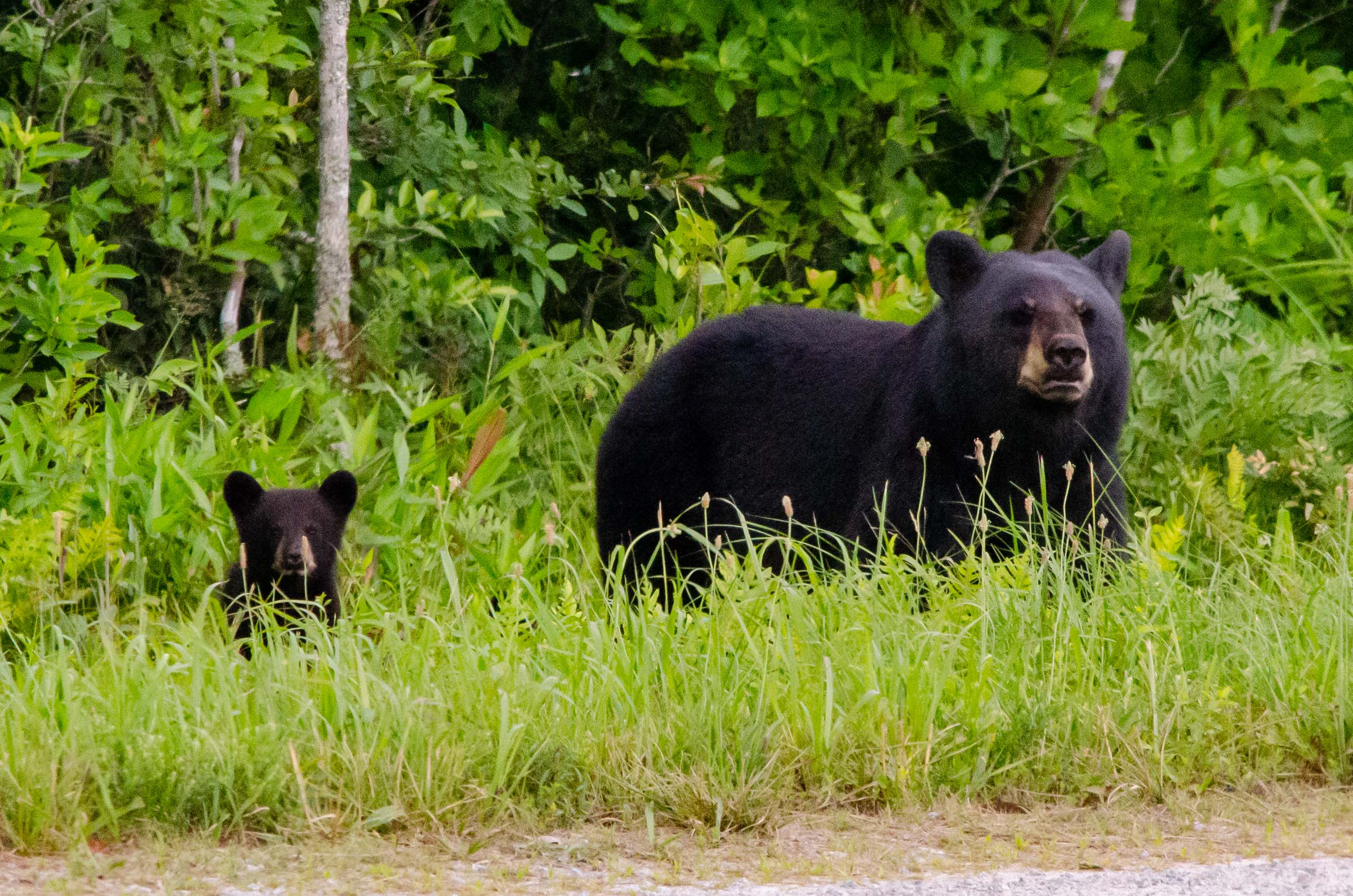|
| Distribution |
In NC, bears have a bimodal distribution (not obvious from the range map) -- resident essentially only in the mountains and the lower Coastal Plain. Though it occurs throughout the mountain province, in the Coastal Plain it is found mainly in the eastern third of the province, inland very rarely to the lower Roanoke River floodplain, the lower Neuse River floodplain, the Bladen Lakes (Carolina bay lakes) area, and the Waccamaw River floodplain, but only sparingly in the Lumber River floodplain. Records for the Sandhills region, much of the western Coastal Plain elsewhere, and practically all of the Piedmont are of strays or transients, though it likely is a resident in the South Mountains and perhaps the Brushy Mountains.
Occurs over most of North America, from Alaska to Newfoundland, south into Mexico. However, over this range it is found mainly in mountainous areas, as well as on the south Atlantic Coastal Plain. |
| Abundance |
Uncommon to locally common in much of the lower Coastal Plain, though scarce away from extensive conservation areas. Very rare in most of the upper half of the Coastal Plain. Absent to very rare transient or "wanderer" through nearly all of the Piedmont. Variously uncommon to locally common in the mountains, most numerous in extensive forested areas, such as Great Smoky Mountains NP. Note that the iNaturalist website contains photos for at least a third of the counties in the state, and the editors have not taken the time to update the map with "Photo" records/documentation unless the county had previously no known records (white on the map). Though there are records for over 90 counties in the state, it is a resident in only half of these, and the State Rank of S4 seems more suitable than S5. |
| Seasonal Occurrence |
Bears frequently hibernate in the winter in the mountains, and thus are seldom seen during that time. They can be active in the Coastal Plain all year, denning in thickets or other dense, evergreen cover. Even so, they are less active in winter than at other seasons in that region. |
| Habitat |
Bears favor extensive forested areas, of various kinds. In the mountains, bears are mostly found where there is hilly/rocky topography and with much evergreen shrub cover. In the Coastal Plain, they are most numerous in extensive pocosins and nonriverine swamps, less so in riverine floodplains. They also occur in extensive pine stands, such as pine plantations, as long as there is a dense shrub and understory cover.
See also Habitat Account for General Sparsely Settled Mixed Habitats |
| Behavior |
Bears are active at all times of the day, though they prefer crepuscular conditions. They forage on a wide variety of plant and animal matter, favoring berries for the colder months. They are most often seen along logging roads and jeep tracks, or along field margins, and are not normally seen inside forests (though thet is where they spend most of their time). |
| Comments |
During historical times, bears ranged across all of the state, but with civilization, clearing of forests, and uncontrolled hunting, bears disappeared from the Piedmont and upper Coastal Plain. The Coastal Plain range continued to shrink into much of the 20th Century, as large areas of pocosins and nonriverine forests were cleared for agriculture and pine plantations. However, bears have started to adapt to such pine stands, and populations are now increasing in the Coastal Plain.
|
| Origin |
Native |
| NC List |
Official |
 State Rank State Rank |
S4 |
| State Status |
|
 Global Rank Global Rank |
G5 |
| Federal Status |
|
| subspecies |
Ursus americanus americanus |
| other_comName |
Black Bear |
| synonym |
|



